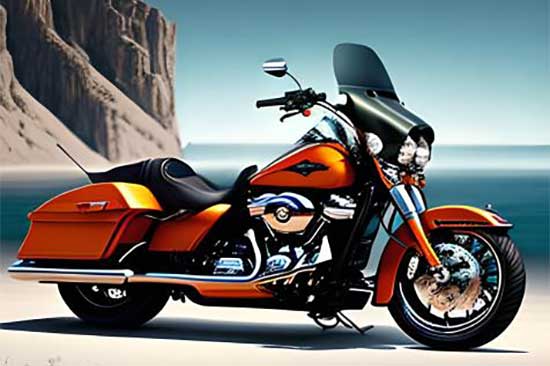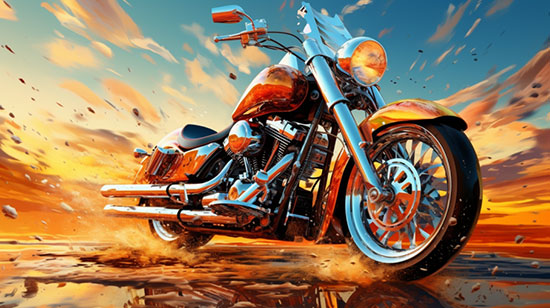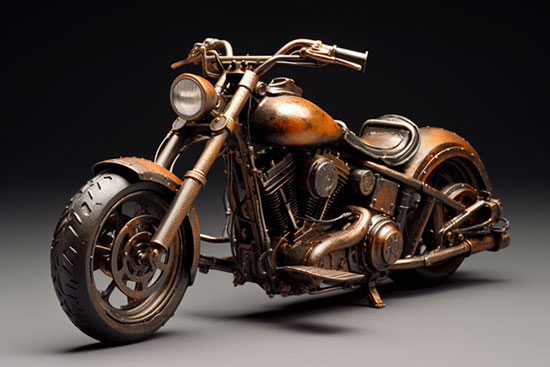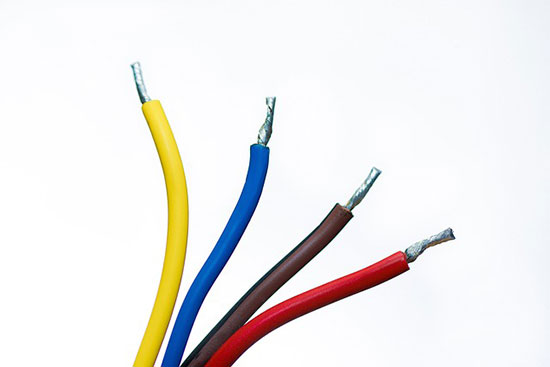When it comes to Harley Davidson motorcycles, customization, and modification options are endless, and choosing the right set of wheels for your bike is crucial.
Whether you’re looking to improve your bike’s aesthetics or performance, using the Harley Wheel Interchange Chart can help you make the best decisions.
Contents
Understanding Harley Wheel Fitment and Compatibility
Before you start exploring Harley wheel interchange options, you need to understand the importance of wheel size and fitment.
The Harley Wheel Interchange Chart is a helpful tool to ensure you choose the right set of wheels for your bike.
Checking tire and rim diameter, bolt pattern, and load capacity is essential for safe installation.
Exploring Models and Years for Wheel Interchange
When looking for compatible wheels, it is crucial to understand which years and models share the same interchange.
Knowing which wheel diameters and bolt patterns will match your bike will save you time and give you the best options for customization.
Identifying load ratings and weight capacities is important to ensure your wheels can handle your bike’s weight and ensure safe performance.
Customization and Modification Options
Customizing your Harley with a new set of wheels can completely transform its design and style. There are plenty of design and style choices to choose from, so it’s important to consider the compatibility and installation needs before making your decision.
When modifying your wheels, you also need to consider performance and handling so that the changes don’t negatively affect your bike’s overall performance.
Examples
Here is the information I found for wheel sizes and tire specs for some Harley Davidson models:
Touring Models
- Road King, Electra Glide, Road Glide FLH, FLT (2000-2003): Front wheel – 16×3, Tire – 130/90-16, Rear wheel – 16×3, Tire – 130/90-16.
- FLH, FLT (2004-2008): Front wheel – 16×3, Tire – 130/90-16, Rear wheel – 16×3, Tire – 140/85-16.
- Road King (except Classic), Electra, Street, Road Glide FLH, FLT (2009): Front wheel – 17×3, Tire – 130/80-17, Rear wheel – 16×5, Tire – 180/65-16.
- Street Glide, Road Glide Custom FLHX, FLTRX (2010-2013): Front wheel – 18×3, Tire – 130/70-18, Rear wheel – 16×5, Tire – 180/65-16.
Sportster Models
- Sportster XL (2000-2010): Front wheel – 19×2.5, Tire – 100/90-19, Rear wheel – 16×3, Tire – 150/80-16.
- Sportster Custom XL 883C / 1200C (2000-2010): Front wheel – 21×2.15, Tire – 80/90-21, Rear wheel – 16×3, Tire – 150/80-16.
- Sportster 72 XL 1200V (2013-2016): Front wheel – 21×2.15, Tire – 80/90-21, Rear wheel – 16×3, Tire – 150/80-16.
For Sportster models:
- 2000-2010 Sportster XL: 19×2.5 100/90-19 (front), 16×3 150/80-16 (rear)
- 2000-2010 Sportster Custom XL 883C / 1200C: 21×2.15 80/90-21 (front), 16×3 150/80-16 (rear)
- 2013-2016 Sportster 72 XL 1200V: 21×2.15 80/90-21 (front), 16×3 150/80-16 (rear)
- 2011-2019 Sportster SuperLow XL 883L: 18×3 120/70-18 (front), 17×4.5 150/60-17 (rear)
- 2014-2017 Sportster SuperLow 1200T XL 1200T: 18×3 120/70-18 (front), 17×4.5 150/70-17 (rear)
- And so on up to the 2020 models
Finding Mechanic Shops and Installation Services
While you may be able to change your Harley wheels yourself, finding a reputable mechanic or shop can save you time and frustration.
With the right mechanic or shop, you can rest easy knowing that your new wheels will be installed safely and correctly.
Finding reputable parts and accessories retailers is also crucial for getting quality aftermarket parts for your customization and modification needs.
Final Thoughts
Choosing the right set of wheels for your Harley doesn’t have to be difficult or complicated. By understanding wheel fitment, exploring compatible years and models, considering customization and modifications, and finding reliable shops and mechanics, you can ensure safe installation and improved performance.
10 Top Takeaways
- Use the Harley Wheel Interchange Chart for compatibility and fitment.
- Check tire and rim diameter, bolt pattern, and load capacity.
- Identify compatibility for customized designs and styles.
- Consider performance and handling when modifying your wheels.
- Find reputable mechanic shops to ensure proper installation.
- Check for parts and accessories retailers for aftermarket options.
- Upgrade your bike’s aesthetics and performance with the right wheels.
- Ensure safe installation and weight capacity for your bike.
- Always follow manufacturer guidelines for compatibility and modifications.
- Consider professional help for customization and safe installation.
If you’re looking to upgrade your Harley wheels, do it right and enjoy the benefits of improved aesthetics, handling, and performance.
Consider your customization and modification options, and find reliable mechanics and shops for safe installation.




